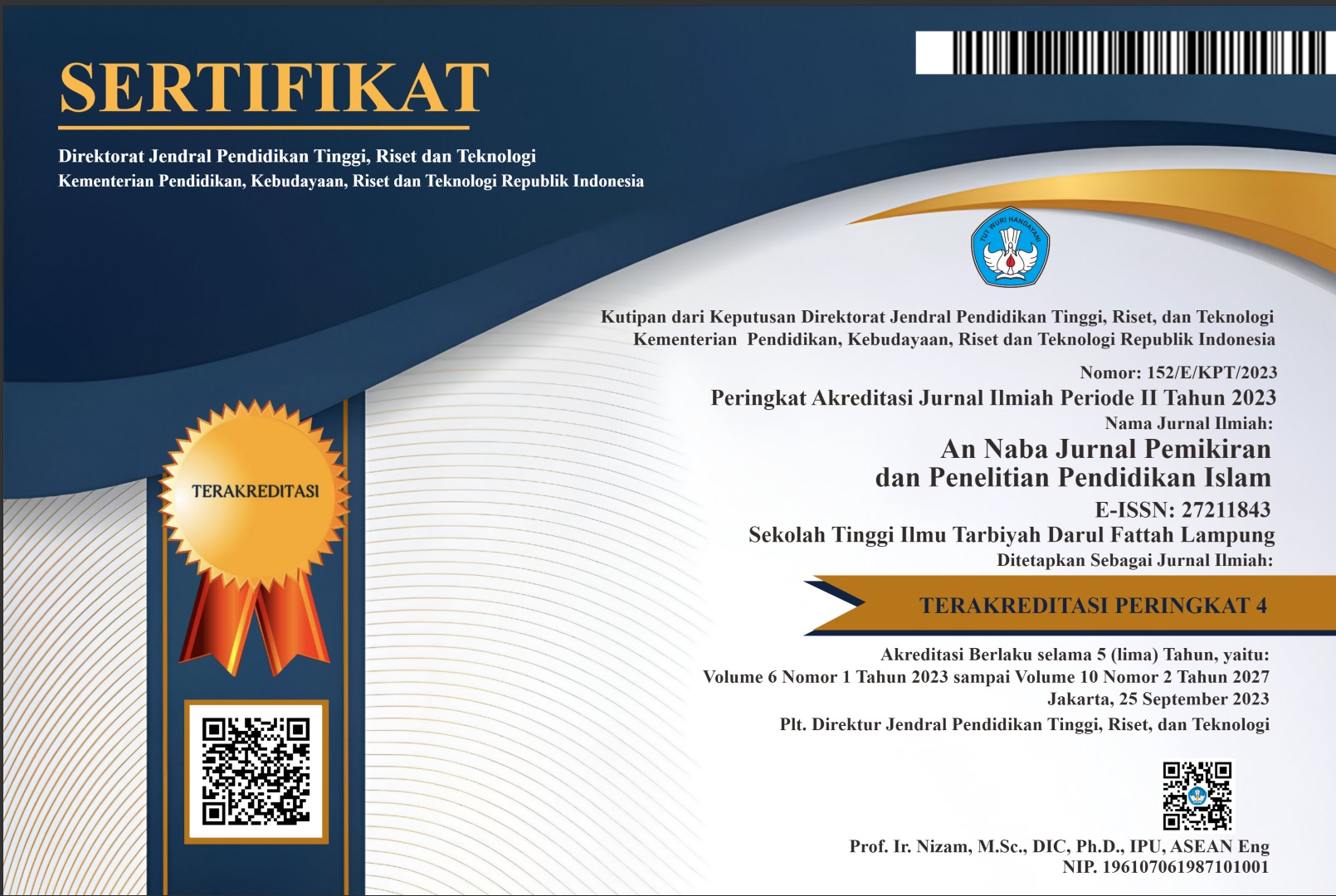Pengembangan Bahan Ajar Buku Teks Bahasa Arab Berbasis Audio Visual Untuk Siswa Kelas X SMK
DOI:
https://doi.org/10.51614/annaba.v5i2.126Keywords:
Pengembangan Bahan Ajar, Buku Teks, Audio VisualAbstract
Textbooks are teaching materials that are the main element in the ongoing learning. This research and development is based on the gap in the delivery of material in Arabic learning. The purpose of this research is to develop audio-visual-based textbook teaching materials for class X SMK students that are packaged in an attractive, practical and effective way. The development model in this study refers to the Borg and Gall development model. The test subjects of this research product were students of class X SMK Muhammadiyah 2 Kalirejo. The results of this study explain that design and media expert validators give a percentage of the design of textbook teaching materials on the display aspect with a score of 98.43% (very feasible); aspects of use obtained a score of 97.91% (very feasible); and the aspect of Utilization obtained a score of 91.66% (very feasible), while from the material and language expert validators for the Introduction aspect, a score of 100% (very feasible); the content aspect obtained a score of 97.5% (very feasible); Learning aspects obtained a score of 95.83% (very feasible); and the Task/Exercise aspect obtained a score of 92.5 (very feasible); and the results of the posttest of students obtained the average overall score of the three aspects of 94.17% (very feasible).
Keywords: Development of Teaching Materials, Textbooks, Audio Visual
References
Abdullah al-Ghali, A. H. A. (2012). Menyusun Buku Ajar Bahasa Arab. Akademia Permata.
Acep Hermawan. (2014). Metodologi Pembelajaran Bahasa Arab. PT Remaja Rosdakarya.
Fujiyanto, A., Jayadinata, A. K., & Kurnia, D. (2016). The use of audio visual media to improve student learning outcomes in material relationships between living creatures. Jurnal Pena Ilmiah, 1(1), 841–850.
Gunarti, T. T. (2020). Pengembangan Media Pembelajaran Bahasa Arab Berbasis Audio Visual Untuk Meningkatkan Maharah Istima’ Pada Siswa-Siswi Madrasah Ibtidaiyah. Awwaliyah: Jurnal Pendidikan Guru Madrasah Ibtidaiyah, 3(2), 127. http://ejournal.iai-tabah.ac.id/index.php/awaliyah/article/view/598
Hamdani. (2011). Strategi Belajar Mengajar. Pustaka Setia.
Hendra Eka Wahyono. (2016). Pembelajaran Tematik.
Hernawan, A. H., Permasih, & Dewi, L. (2012). Pengembangan Bahan Ajar Tematik. Direktorat UPI Bandung,1489–1497. http://file.upi.edu/Direktori/FIP/JUR._KURIKULUM_DAN_TEK._PENDIDIKAN/194601291981012-PERMASIH/PENGEMBANGAN_BAHAN_AJAR.pdf
Putra, D. D., Okilanda, A., Arisman, A., Lanos, M. E. C., Putri, S. A. R., Fajar, M., Lestari, H., & Wanto, S. (2020). Kupas Tuntas Penelitian Pengembangan Model Borg & Gall. Wahana Dedikasi : Jurnal PkM Ilmu Kependidikan, 3(1), 46. https://doi.org/10.31851/dedikasi.v3i1.5340
Setiono. (2016). Optimalisasi Penguasaan Konsep , Kemampuan Berinkuiri Dan Sikap Ilmiah Mahasiswa Melalui Modul Berbasis Inkuiri. Fkip Sukab, 1, 10–15.
Shofiya, A., Qorin, A., & Malang, U. N. (2020). Pengembangan Buku Teks Bahasa Arab Siswa Kelas 4 Mathayom Di Islamic Santitham Foundation School Nakhon Si Thammarat. 74–88.
Sugiyono. (2011). Metode Penelitian Kuantitatif Kualitatif dan R&D. Alfabeta.
Syamsuddin Asyrofi, T. P. (2016). Penulisan Buku teks Bahasa Arab. Ombak.
Zulhanan. (2014). Teknik Pembelajaran Bahasa Arab Interaktif. RajaGrafindo Persada.














.png)




